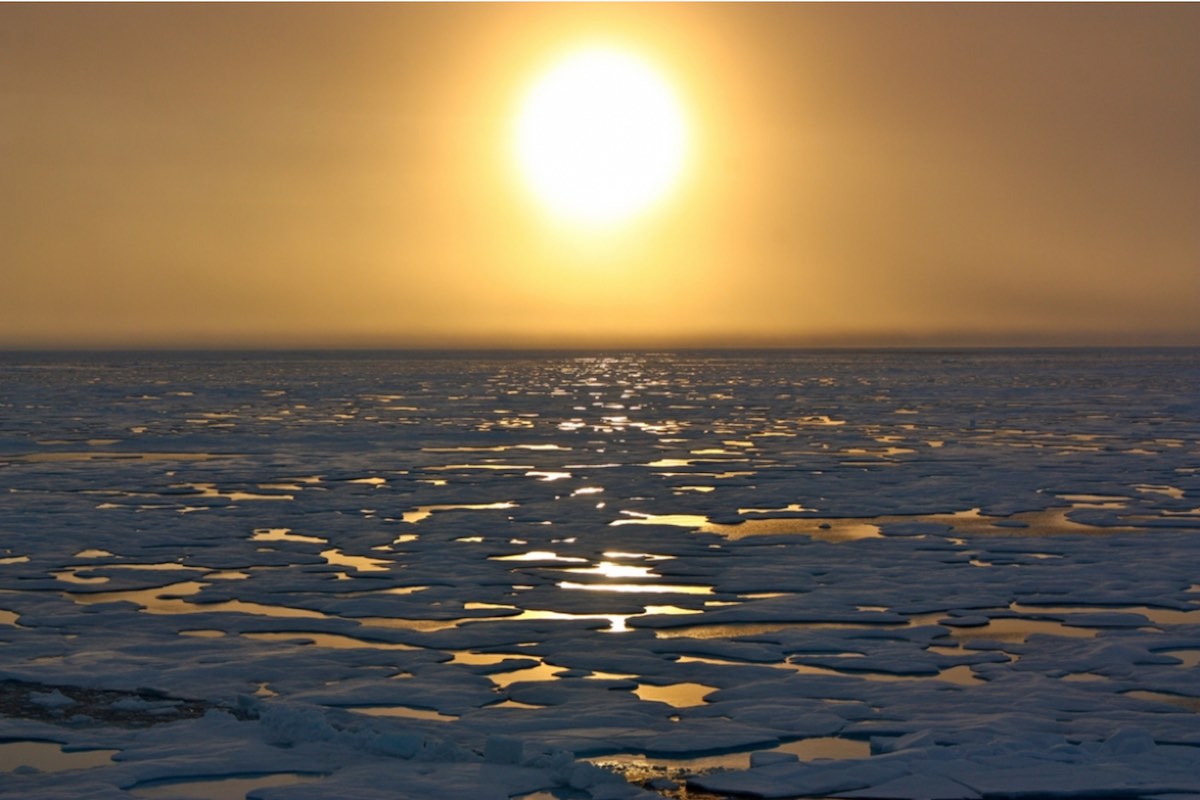
As climate change intensifies the melting of sea ice in the Arctic, thousands of tiny, wind-powered pumps could make Earth's northern cap freeze, scientists propose.
The plan, which is not intended to replace other carbon mitigation strategies, would involve pumping cold seawater from below the ice on top of it during the winter months, making it easier for that water to freeze into ice, the scientists said.
However, not everyone is convinced the method would work; one researcher questions both the scale required to make a dent in Arctic warming and even the simple physics behind it. [Cloud Shields and Cow Pills: The Craziest Climate Fixes]
An ever-warming Arctic
Climate change is dramatically reshaping the Arctic. Historically, more ice froze in the winter than melted in the summer. However, "as the climate warms, we are starting to melt more ice in the summer than we remake in the winter, which means ice is starting to be depleted from the Arctic," said study co-author Hilairy Hartnett, an oceanographer at Arizona State University.
That means that the vast expanse of summer sea ice has shrunk dramatically, and studies now suggest that the Arctic will be completely ice-free during summer by the 2030s.
An ice-free Arctic would not only contribute to rising sea levels but could also exacerbate a positive feedback loop leading to intense planetary warming. That's because pale sea ice reflects sunlight back out into space, thereby cooling the climate. With all that sea ice gone, the dark waters of the ice-free Arctic would absorb all that sunlight, warming the planet further, Hartnett said. [10 Things to Know About Sea Ice]
While slashing carbon emissions is necessary, most researchers now believe that it won't be enough to halt the retreat of sea ice, Hartnett said. Instead, scientists are now considering whether artificial means could stave off the disappearance of sea ice.
Sign up for the Live Science daily newsletter now
Get the world’s most fascinating discoveries delivered straight to your inbox.
"Helping to preserve ice in the Arctic is going to buy us time," Hartnett told Live Science.
Toward that end, Hartnett and her colleagues came up with a very basic idea: help the Arctic make more ice in the winter, when the temperatures will be cool enough, even under most climate change scenarios, to freeze water.
Ice is a good insulator, meaning that thick hunks of frozen water floating on top of the sea prevent the freezing of seawater below them. However, the air temperature during the Arctic winter is still bone-chilling — at minus 40 degrees Fahrenheit (minus 40 degrees Celsius). That means that if the water were not insulated from the cold by thick chunks of ice, it would freeze easily.
So, the team reasoned, what if the seawater below the ice could be brought up to the surface somehow? The idea would be to use tiny, wind-powered pumps to pull seawater from between 6 and 9 feet (1.8 and 2.7 meters) below the sea ice up to the surface, where it could freeze, the researchers proposed in the study, which was published online Jan. 24, in the journal Earth's Future.
Potential limitations
The new scheme has several potential drawbacks.
For one, based on the team's calculations, a single pump could freeze an additional 3.3 feet (1 m) of ice on top of existing sea ice for an area of about 0.04 square miles (0.1 square kilometers), Hartnett said.
"If you wanted to do the entire Arctic ice shelf, you would need tens of thousands" of pumps, Hartnett said. "But you could imagine working at the edges of the current Arctic ice."
Another problem is that these pumps don't exist yet, though it would be possible to build them with off-the-shelf parts, Hartnett said.
But even if the pumps could be built, not everyone is convinced they'd solve the problem.
"Think about this: What happens when you scatter salt on an icy sidewalk?" said Elizabeth Hunke, a fluid-dynamics researcher at Los Alamos National Laboratory in New Mexico, who was not involved in the study. (Answer: The ice melts.)
Seawater is salty, but because salt migrates away from the surface of the ice as water freezes, sea ice is relatively pure (and melted, older sea ice can even be used as a freshwater source), Hunke said. So the proposed method, which would coat the top of sea ice with salty seawater, might not freeze the top layer of ice as expected, Hunke said.
"The model that the authors use is extremely simple and does not take into account how the salt in seawater would affect the sea ice it's put onto, nor other critical sea-ice processes, such as meltwater drainage and flushing when the ice becomes porous, and so their conclusions might not hold," Hunke told Live Science in an email.
Beyond that, it's just not clear whether the method could be scaled up, given the harsh Arctic environment, Hunke said.
Originally published on Live Science.

Tia is the managing editor and was previously a senior writer for Live Science. Her work has appeared in Scientific American, Wired.com and other outlets. She holds a master's degree in bioengineering from the University of Washington, a graduate certificate in science writing from UC Santa Cruz and a bachelor's degree in mechanical engineering from the University of Texas at Austin. Tia was part of a team at the Milwaukee Journal Sentinel that published the Empty Cradles series on preterm births, which won multiple awards, including the 2012 Casey Medal for Meritorious Journalism.










